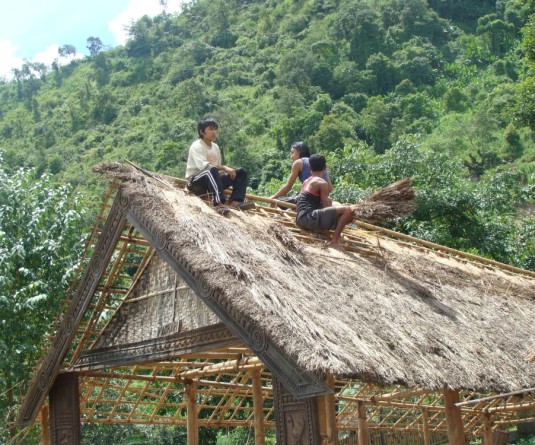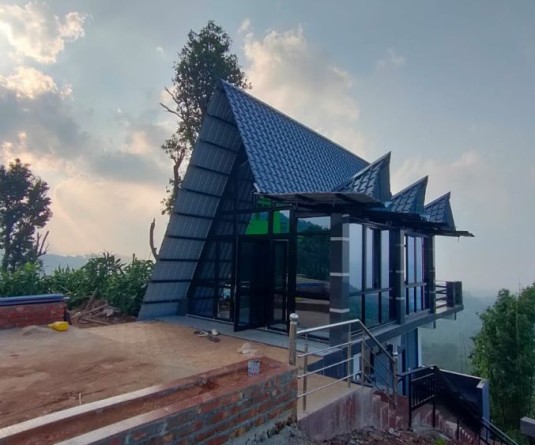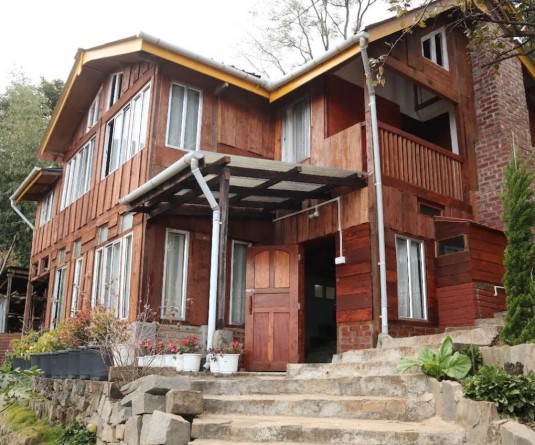It is 9:00 PM, usually the rush hour time at the restaurants and eateries at Mariani town (bordering Nagaland), but due to the Ao Senden bandh, the hotels and the roads wore a deserted look. The workers at the hotels disclosed that there are no Customers. “Earlier we used to wake up at 5:00 AM, now we sleep till 7:00 AM,” said this worker at a Mariani hotel. (Morung Photo)

Longrangty Longchar
Mokokchung | June 3
Assam and Nagaland, the two sisters in Northeast, share a history that dates back as far as their existence in this region. The relationship had been mostly of amiable marked with profitable trading business between the two communities. There is also history of how Naga villagers used to shelter Ahom kings when invaders attacked their lands. Besides, Naga elders narrate stories of beautiful Naga ladies being handed over in marriage to Ahom princes.
Such was the relationships in the past, that slowly changed by the middle of the 20th Century and it continues till today. For many observers, the latest incident that happened on May 24, 2013 at Mariani where Naga travelers were harassed and assaulted might seem like a stray incident. However, the preceding incident on May 23, 2013 where Saringyim villagers apprehended two Adivasi labourers and handed over to police, and which led to the subsequent Mariani incident the next day, was just the immediate cause of a simmering border tension.
The border tension between the two neighbors has been continuing for decades now. The two sisters even fought a bitter border war in 1975, which saw huge casualty on the Assamese side. The Central Government had to intervene and now there is a case pending with the Supreme Court with regard to the border issue. While the Government of Nagaland had been calling for political settlement on the issue, the Assamese Government wants a court ruling to solve the issue.
Differences continue even on how to solve the issue. ‘Dependent or not to be dependent’ Assam is a rich state with plenty of tea estates and other well-established business enterprises. On the other hands, Nagaland remains dependent on Assam for the essential commodities for consumption. This has led to the Assam based organizations to flex their economic muscles on several occasions to meet their demands. The most common means of pressurizing the Naga society has been calling of bandhs on the Mariani road, which is the commercial lifeline for the people of Mokokchung and its neighboring districts. Besides, harassments meted out to Naga public by Assam police or public while traveling on the Assam highways are common stories. But there was always a dignified endurance on the part of the Naga public thus far, until on May 28, 2013, when the Ao Senden (apex organization of the Ao community) decided to enforce an indefinite blockade on the Mariani and Amguri roads. Unprecedented support from every section of the society poured in towards the decision of the Ao Senden.
“The decision of the Ao Senden (to close the two roads) is not because of fear or of harassment, but it is a big sacrifice made by Ao Senden; and it is simply to show the Assam based organizations that we can survive on our own,” said the president of Central Naga Tribes Council, Ntsemo Ngullie who visited Ao Senden on a goodwill mission on Sunday. The Nagas are demanding a foothill road connecting Tizit in Mon district to Dimapur. It is said that the distance from Mokokchung-Dimapur through this foothill road will take only 2 ½ hours. At present, it takes more than seven hours via Assam to reach Dimapur from Mokokchung. Besides, Naga publics are optimistic that once this road is completed then the essential commodities can be imported from Dimapur. However, it is easier said than done.
The president of the Upper Assam Chamber of Commerce, OM Gattani while interacting with The Morung Express at Jorhat on May 31, 2013 opined that unless the rampant tax collection by different underground groups and organizations in Dimapur is checked, then prices will always remain higher than Jorhat in Dimapur. Gattani pointed out that prices should be cheaper in Dimapur since the train first crosses Dimapur and reaches Jorhat. Several civil organizations in Dimapur are trying its best to figure out how to control the rampant taxation; but the task is by no means easy. Nonetheless, Gattani also supported the foothill road since it will earn revenue for the Nagaland government.
“At present you are importing goods from Jorhat and you are paying sales tax in Assam which goes to the Assam Government. If you take it without crossing Assam, then the sales tax will go to the Nagaland Government,” said Gattani.
‘Good fences make good neighbours’
The issue between the two sisters is a complex mixture of social, economic and political which surely will continue for a long time to come. A present a buffer zone, also called the disputed area, demarcates the two states. While the Naga villagers settled at the border valley areas claim their this disputed areas as their traditional land taken by the Britishers for tea cultivations; the Assamese government term it as ‘no man’s land’ which can be used for expansion of the tea estates. There is also no show of political will from the Government of India to solve the problem except to advise the two states to maintain status quo and deploying some CRPF battalions to the disputed areas. However, that status quo is hard to maintain since the Tea Estates driven by their business interests steadily stretches their tea gardens and the Nagas hell-bent on safeguarding what they assert is their traditional lands since from time immemorial.
Concerned intellectuals fear that the issue might one day go out of hand unless a clear-cut border is demarcated and both the states respect that border area. “This issue is related with land. This is our land and we have to safeguard it, because if we lose this land where will the Aos or the Nagas go tomorrow. So even if the Ao Senden lifts the bandh, for us we will continue to ward off encroachers,” said a Saringyim VC member. A show of political will on the part of Nagaland government is perhaps the need of the hour.






